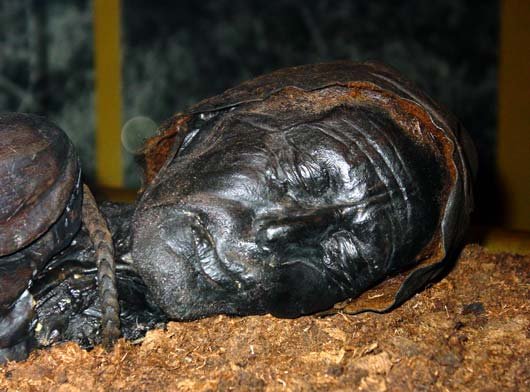Death is surrounding us all the time, but it is clearly not the end. There are a lot of changes happening to our bodies after death and some of them leave spectacular results. One of the most amazing and interesting events is a mummification in a peat bog. Bodies preserved that way look very characteristic, but they are rare and hard to maintain.
Sadly, not all of the discovered bodies are in good conditions.
When does this type of mummification happen?
Mummification in a peat bog requires acidic environment, rich in humic acids and tannins, as well as low temperature and anaerobic conditions. Anaerobic state and low pH is necessary to stop microorganisms responsible for putrefy to spread and destroy the body. Because of a lot of requirements essential for the process to happen, this type of body preservation is rare. What is more, their maintaining is also problematic.
Peat bogs are not very common as well, so all of the mentioned conditions as well as the limitated presence of the peat bog are the reason why this type of mummies are not discovered everywhere. The biggest amount of specimens comes from Germany, Denmark, and The Netherlands, where people lived from thousands of years. That is the reason some of the bodies are dated back to two thousand years BC or more. Except for an accidental, singular mummies, battlefields and old burial areas are very interesting places for archeologists. One of the excavations took place in Poland, where was the Eastern Front during World War II.
Characteristic look
All bodies after this type of mummification are looking alike. The most common features are black skin (dyed by tannins, which inhibits decomposition of skin as well) and red hair, no matter what color they were before death. Thanks to tannins, skin is so well preserved, there is a chance to see mimic wrinkles and take fingerprints. Specific environment of bogs allows materials and textiles to be preserved too, as well as leather objects.
Mummification in a peat bog is harsh for bones. The bones in acidic surroundings loose minerals (mostly calcium phosphate), that are making them so hard. That leaves the bones very soft, in some cases there is a chance to cut them using small kitchen knife. Some discovered bodies have destroyed bones to the point, where the mummy looks more like a "skin bag".
Man from Tollund

Link
Grauballe Man's hand

Link
Hard preservation and analysis of bodies
One of the biggest obstacles in examination of the bodes is their preservation conditions. The best way to keep them save from rotting is storage in the conditions they were found in, that means the exact same pH range. The most common practice is taking the ground that is surrounding the mummy to the laboratory as well, so there is a chance to put the body on the ground. That helps to sustain the optimal conditions for the body. Wrong storage of the mummy leads to its decay.
Even though bog bodies are preserved well and look exceptionally good for its age, there is no chance for genetic analyze. Some of the internal organs may be so well preserved, there is a chance to examine them. The body can be tested with CT to define the death cause and carbon dating to determine the age of the mummy.
Examples
The most interesting examples of mummification in a peat bog are:
- Man from Tollund - strangled by the loop: the line that was used to kill him was preserved as well
- Man from Grauballe - probable cause of death: throat slitting
- Girl from Yde - strangled and sacrifice to gods
- Boy from Kayhausen - stabbed for times with a four centimeters blade
Are this mummies prettier than Egyptian ones? Some of them for sure, but there is a lot of compeletly destroyed bodies too. Thanks to them we have a bigger understanding of people's life in Europe thousands of years ago, including their clothes, hairstyles and diseases they were victims of.
I hope this man's face won't appear in your dreams. Remember to share your thoughts and questions in comments
Follow me for more informations about post mortem changes of the body, genetics or biology